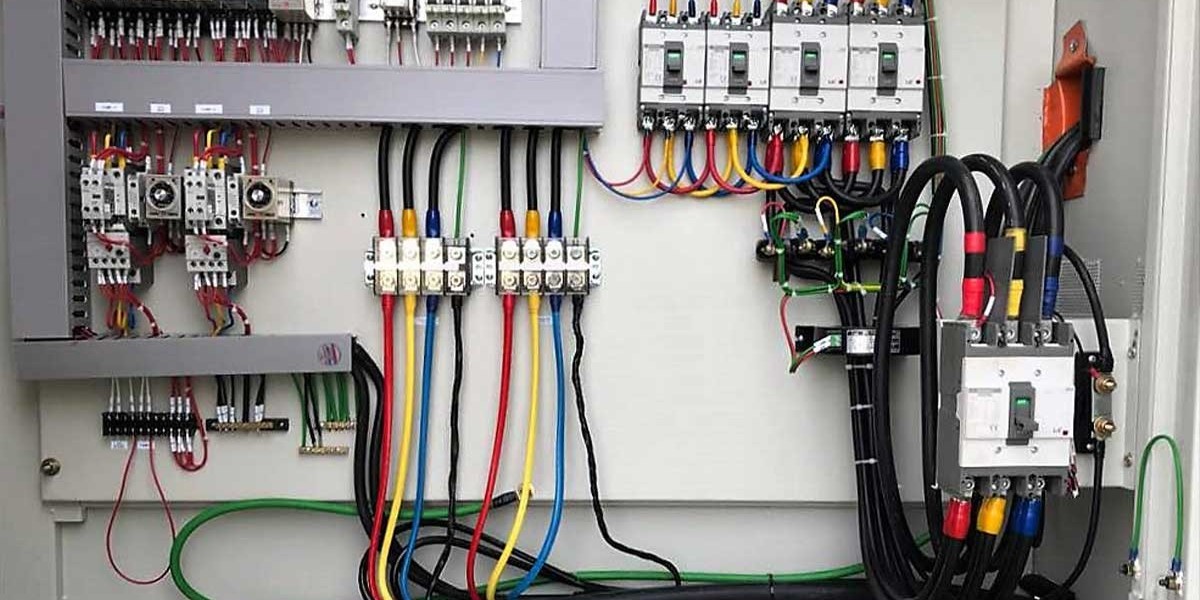As our cities and towns continue to evolve, we often find ourselves dealing with aging infrastructure that requires careful attention and maintenance. One crucial aspect of this upkeep is electrical wiring. Whether you're a property owner, a facility manager, or an electrician, estimating the cost of electrical wiring in aging infrastructure is essential for planning and budgeting. In this article, we will explore the key factors to consider when estimating electrical wiring costs for aging infrastructure.
Assessment of Existing Infrastructure
Before diving into the cost estimation process, it's crucial to conduct a thorough assessment of the existing electrical infrastructure. Aging wiring systems may have degraded insulation, corroded wires, or outdated components that need replacement. Determine the current condition of the wiring to identify areas that require immediate attention and those that can be preserved.
Type of Building and Wiring
The type of building plays a significant role in estimating electrical wiring costs. Older buildings may have outdated wiring systems that need to be completely replaced, while newer structures might require minor upgrades. Consider factors like building size, layout, and the intended use of the space. Commercial and industrial buildings, for example, may have different requirements than residential properties.
Code Compliance and Safety Standards
Electrical codes and safety standards evolve over time. When estimating wiring costs for aging infrastructure, it's crucial to ensure that the project complies with current electrical codes and safety regulations. Non-compliance can result in costly fines and, more importantly, compromise the safety of the building's occupants.
Material and Equipment Costs
The choice of materials and equipment has a significant impact on the overall cost of electrical wiring. Older buildings may require specialty materials that are no longer common, driving up costs. Additionally, consider energy-efficient options, as they can lead to long-term cost savings.
Labor Costs
Labor costs are a substantial portion of any electrical wiring project. Estimating labor costs accurately involves considering factors such as the complexity of the installation, the need for specialized skills, and the duration of the project. Hiring experienced professionals is crucial to ensure the work is done correctly and efficiently.
Unforeseen Challenges
Aging infrastructure often presents unforeseen challenges, such as hidden wiring issues or structural complications. It's essential to include a contingency fund in your estimate to account for these unexpected hurdles.
Permits and Inspections
Don't forget to factor in permit fees and inspection costs when estimating your electrical wiring project. These expenses are necessary to ensure that the work meets local regulations and safety standards.
Energy Efficiency and Sustainability
In environmentally conscious world, consider incorporating energy-efficient and sustainable features into your electrical wiring project. While initial costs may be slightly higher, the long-term benefits in terms of reduced energy consumption and lower utility bills can be significant.
Consult with Experts
Estimating electrical wiring costs for aging infrastructure can be complex. It's advisable to consult with experienced electricians or electrical engineers who specialize in working with older buildings. They can provide valuable insights and help you develop a more accurate cost estimate.
Upgrading Electrical Wiring in an Aging Office Building
To put these estimation principles into practice, let's explore a hypothetical case study of upgrading electrical wiring in an aging office building:
Assessment: Begin with a detailed inspection of the building's electrical systems. Identify worn-out wires, damaged outlets, and outdated panels. This assessment reveals that the wiring in the building is over 40 years old and no longer meets current safety standards.
Type of Building: The office building is a multi-story structure with 50,000 square feet of office space. It houses various businesses, making it a commercial property.
Code Compliance: It's essential to bring the electrical system up to code. This may involve rewiring the entire building, replacing outdated panels, and adding safety features like GFCI outlets. Factor in the cost of obtaining the necessary permits and scheduling inspections throughout the project.
Material and Equipment Costs: Due to the building's age, specialty materials are required. You'll need to invest in modern wiring, circuit breakers, outlets, and energy-efficient LED lighting. While these materials might be more expensive upfront, they will lead to energy savings over time.
Labor Costs: Given the size and complexity of the project, you'll need a team of experienced electricians to complete the work. Estimate the labor costs based on the duration of the project, hourly rates, and any overtime pay.
Unforeseen Challenges: Expect the unexpected. Budget for potential surprises like discovering hidden wiring problems, asbestos removal, or structural adjustments. A 10-15% contingency fund should cover unforeseen expenses.
Permits and Inspections: Include the costs of obtaining permits and scheduling inspections in your budget. Non-compliance can lead to delays and additional expenses.
Energy Efficiency and Sustainability: Consider installing energy-efficient lighting, smart controls, and renewable energy sources, such as solar panels, to enhance the building's sustainability. While these upgrades may initially increase costs, they'll reduce long-term operational expenses and benefit the environment.
Consult with Experts: Collaborate with electrical engineers and contractors who specialize in renovating aging buildings. Their expertise will ensure your estimate is accurate and comprehensive.
Conclusion
The estimating electrical wiring costs for aging infrastructure requires a holistic approach. By considering all relevant factors, including the type of building, code compliance, material costs, labor expenses, unforeseen challenges, permits, and sustainability, you can develop an estimate that aligns with your project's goals and budget.
Remember that safety and quality are paramount when working with electrical systems. Investing in the proper assessment and professional expertise will not only ensure compliance with regulations but also guarantee the long-term functionality and reliability of the electrical wiring in your aging infrastructure.
Frequently Asked Questions
Why is it important to estimate electrical wiring costs in aging infrastructure?
Estimating electrical wiring costs in aging infrastructure is crucial for budgeting and planning purposes. It helps property owners, facility managers, and electricians determine the financial scope of necessary electrical upgrades and ensures that safety and compliance standards are met.
What should I consider when assessing existing electrical infrastructure in an aging building?
When assessing existing electrical infrastructure, consider the condition of wiring, potential safety hazards, code compliance, and the compatibility of the existing system with modern requirements. This evaluation informs the scope of the project and its associated costs.
How does the type of building affect electrical wiring cost estimates?
The type of building, whether it's residential, commercial, industrial, or institutional, significantly impacts cost estimates. Different types of buildings have varying electrical requirements and complexities that influence material and labor costs.
What role do electrical codes and safety standards play in estimating costs?
Compliance with electrical codes and safety standards is essential to ensure the safety of occupants and avoid legal issues. Non-compliance can lead to costly fines and delays, making adherence to current regulations a critical factor in cost estimation.
How do material and equipment choices affect electrical wiring costs?
The choice of materials and equipment can impact both upfront and long-term costs. Specialized or energy-efficient materials may have higher initial costs but can lead to energy savings over time, making them a worthwhile investment.
 " class="wow_main_float_head_img">
" class="wow_main_float_head_img">







